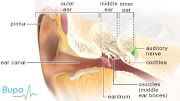The following technologies are either obsolete, or limited to particular applications though most were, at one time, in widespread use.
Thermal printers work by selectively heating regions of particular heat-sensitive paper. These printers are limited to special-purpose applications such as money registers and the printers in ATMs and gasoline dispensers. They are also used in some older reasonably priced fax machines.
Impact printers rely on a forcible impact to transfer ink to the media, like to the action of a typewriter. All but the dot matrix printer rely on the use of shaped characters, letterforms that represent each of the characters that the printer was capable of printing. In addition, most of these printers were restricted to monochrome printing in a single typeface at one time, although bolding and underlining of text could be done by overstriking, that is, printing two or more impressions in the same character position. Impact printers varieties contain, Typewriter-derived printers, Teletypewriter-derived printers, Daisy wheel printers, Dot matrix printers and Line printers. Dot matrix printers remain in general use in businesses where multi-part forms are printed, such as car rental service counters.




